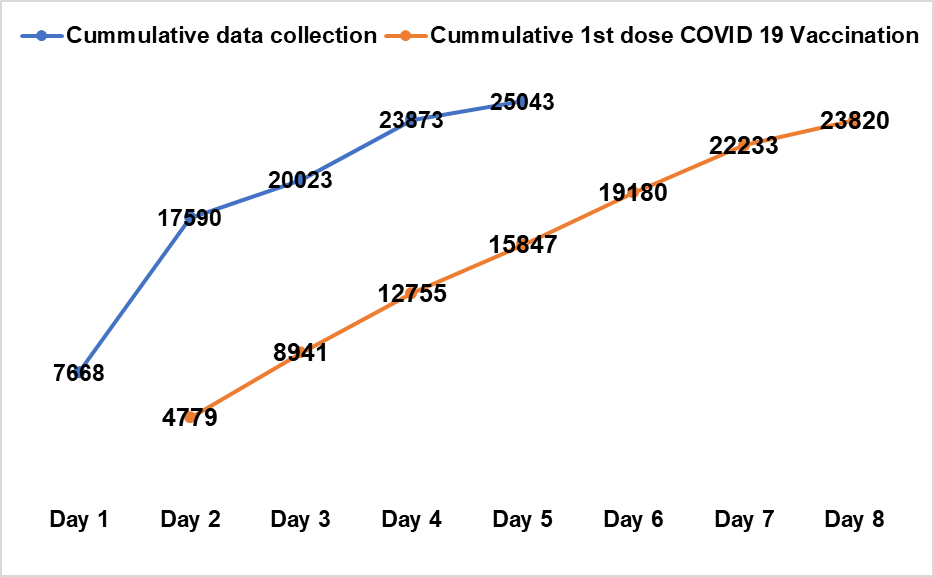In recent years, most of the global populations especially students, use smartphones due to its wide range of applications.There has been tremendous growth in the use of the mobile phones in India. Traditionally the data collection was done through pen and paper then either analysed there itself or entered manually in a computer then analysed to draw the inference.The smartphones nowadays allow the data collection and direct submission and two-way retrieval of data from the field to a central database in researches. Epicollect5 is such a web and mobile based mobile application which is free, user friendly, time savingand directly exports the data in excel for the analysis and interpretation. This software allows data collection on a smartphone using a single questionnaire form that is designed as per the need of the user.
Use of epicollect5 to pace up the COVID19 vaccination in adistrict:
In this review the epicollect5 was used to increase the pace of COVID19 vaccination to achieve the target. This hilly district of North India has a wide geographical diversity in the form of scattered population, difficult terrains and hard to reach areas. COVID19 vaccination was started in phased manner from 16th January 2021. The district achieved its around 90% target of 1st dose of 18 plus population. But it got challenging for the health teams to achieve the last few percentages as left out people were not turning out at session sites. District administration with health authorities decided to collect data of left out eligible people to identify the clusters with high load and locate the old or physically disabled people. So, the epicollect5 was used to collect the data of the left-out beneficiaries who could not reach to the vaccination centres. In the web version a 12-questionnaire form was built in form builder segment in both Hindi and English to make it more user friendly (Figure 1).

Figure 1: Questionnaire in form builder of epicollect5
The end users were the field level workers namely Aanganwadi workers and ASHAs who are backbones of our health system. As the software was new to the users, a video in local language was made demonstrating how to download the application and how to collect the data in the mobile version. The video was shared through social media to the field workers. Surprisingly the field staff not only understood the video but collected around 7,668 beneficiaries’s data on the very next day; uploaded it in the central database of the user as demonstrated in the shared video. The field staff went house to house of their work area and collected data of around 25,000 beneficiaries in just 5 days. The data was analysed on daily basis by the authors. From the second day of initiation of this activity, on the basis of analysis of the shared data, the vaccination teams were directed to conduct the session up to village and panchayat level of these left out areas. The data of the physically handicapped and bed ridden was also collected in the same questionnaire as a result this category of people were vaccinated by the vaccination teams at their homes. The third difficult category was the labourers and nomads who were not having any valid identity cards but residing in these areas. Their data was also collected and they were vaccinated by planning special session in their workplaces. So, within 7 working days the vaccination teams of health department vaccinated around 24,000 these beneficiaries.

Figure 2: Day wise cumulative trend of data collection and vaccination



